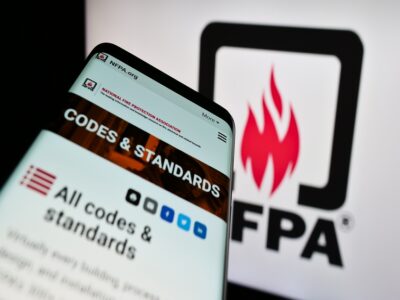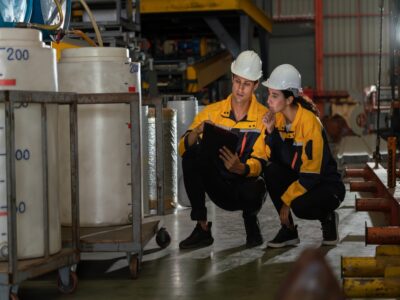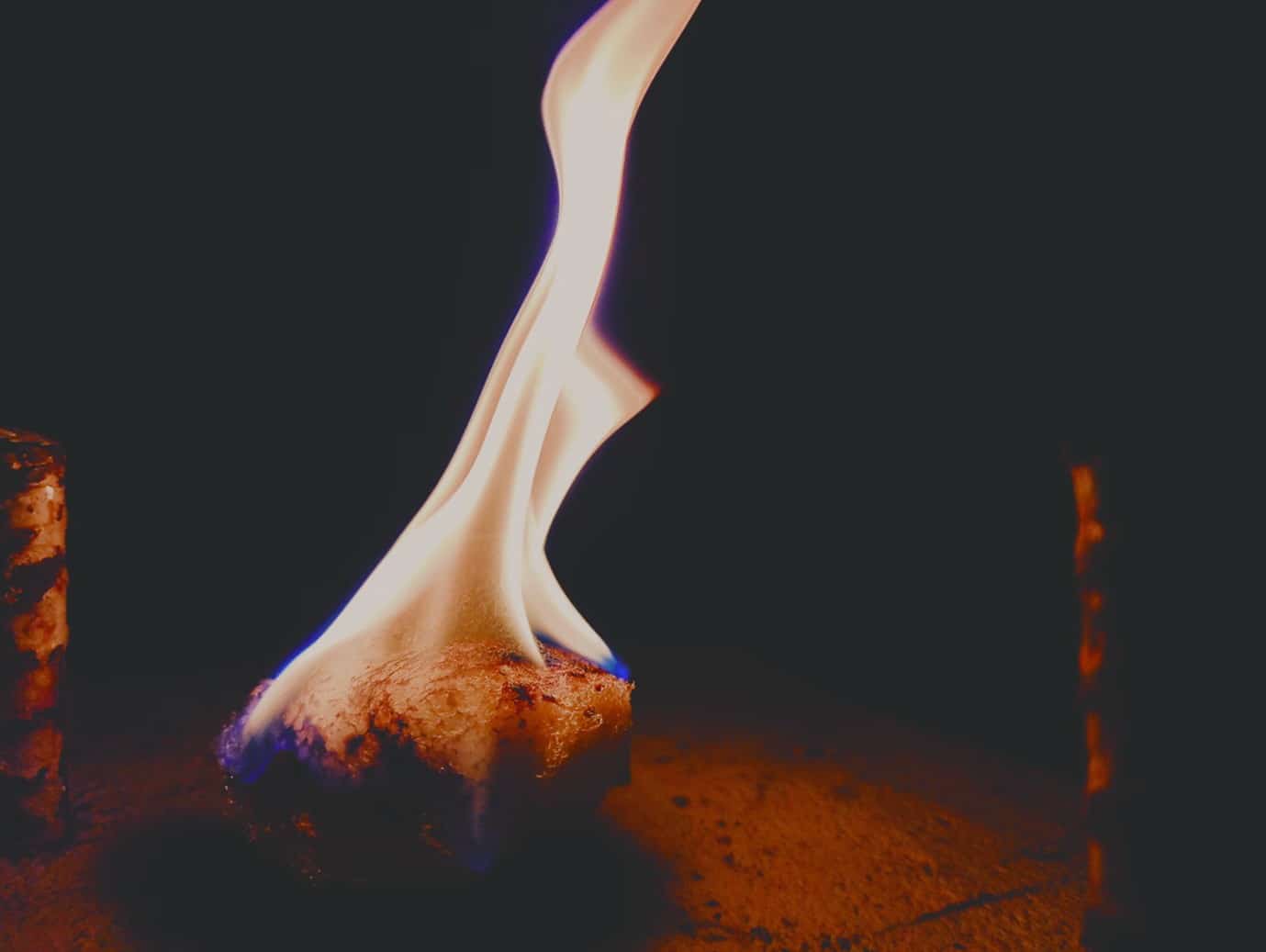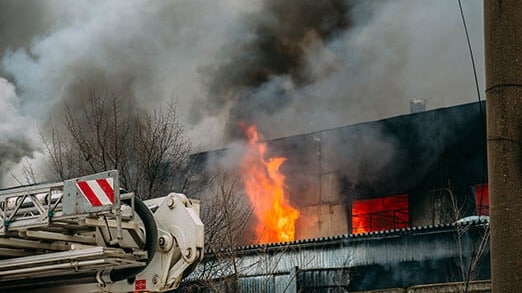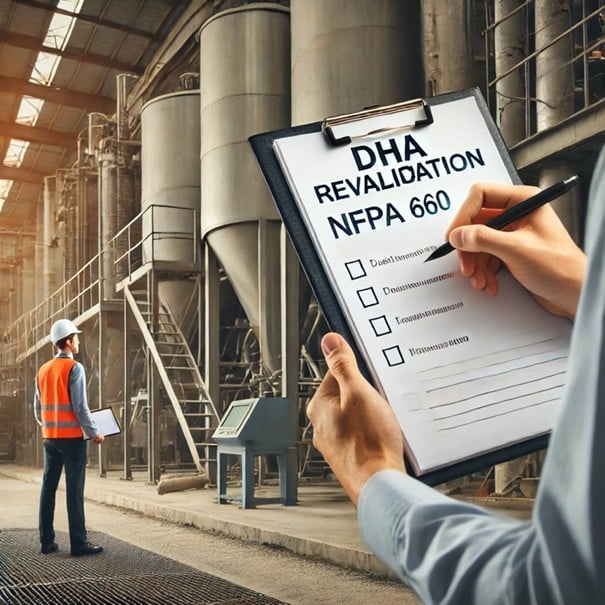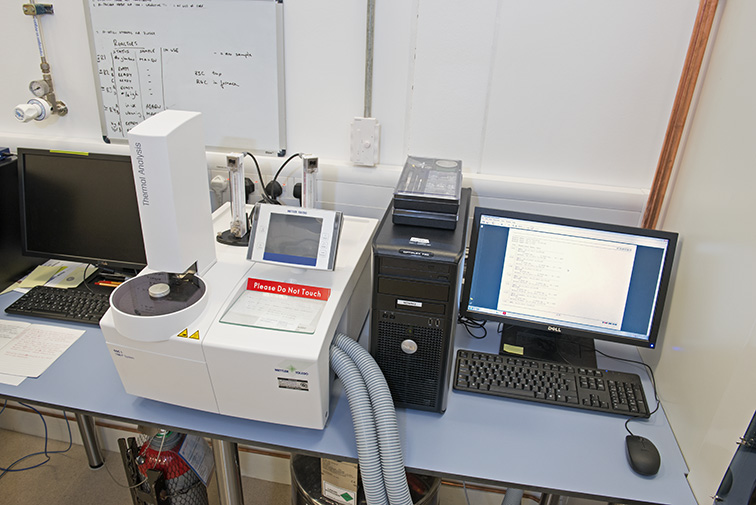
Ignition sources for dust fires and explosions can take many forms, but when powders are heated, subtle sources of ignition can exist that are associated with the inherent thermal instability properties of the powder being heated/dried and the nature of the drying process.
Self-heating of powders due to exothermic reaction (exothermic decomposition or exothermic oxidation) can result in smoldering, fire, and production of hot or incandescent particles which can travel along conveying equipment and act as an ignition source to dust clouds in downstream process equipment. Sometimes exothermic decomposition causes (rapid) evolution of large quantities of toxic or flammable gases. Even if there is no smoldering or fire, self-heating can sometimes compromise product quality (charred particles).
Industrial operations that are prone to fires and possibly explosions due to self-heating include powder drying/heating and their subsequent processing, handling, packaging, storage, and transportation.
Factors that affect the onset temperature for self-heating include powder composition, the presence of impurities, geometry and size of the accumulated powder, air availability, and the duration of powder exposure to a given temperature.
For laboratory testing to provide a useable indication of the hazards, a representative powder sample must be selected for testing, and the tests must also reasonably simulate the conditions that the powder experiences during drying and subsequent downstream processes. Often, a number of different tests may need to be considered to obtain all the necessary data for proper evaluation of the self-heating hazards during all process stages. This is particularly important if the initial “screening test results suggest an onset temperature for self-healing that is close to the drying temperature.
Self-heating tests are conducted in accordance with the specifications in the Institute of Chemical Engineers’ publicationPrevention of Fires and Explosions in Dryers.
Powder Layer Test
Powder Layer test (also called Air-Over-Layer test) simulates the conditions in which hot air passes above a layer or deposit of powder in a dryer. Examples include tray dryers and powder deposits on the internal surfaces of all dryer types.
A metal tray with dimensions 75mm x 40mm and 15mm deep (3 x 1.6 x 0.6) is filled with the test powder and heated by air passing around the tray (and powder) at a velocity of 4.3m/min (14 ft/min). temperature is monitored by thermocouples in the powder bed and around the outside of the tray.
Normally a “screening test is first performed during which the air temperature is programmed to increase at a rate of 0.5°C/min (0.9°F/min) for a 14-hour period. If the results of the “screening tests indicate a temperature difference higher than 50° (122℉) between the onset temperature for self-healing and the dryer operating temperature hazardous exothermic reaction is unlikely to occur.
Additional testing will be required if any of the following conditions exist:
- The temperature difference between the onset temperature for self-healing and the dryer operating temperature is less than 50° (122℉), or
- The operating cycle is longer than the test period above the process temperature, or
- The onset temperature for self-healing is less than 200° (392°F)
If any of the above conditions exist then an “isothermal Powder Layer test is conducted at 50° (122℉) above the intended drying temperature for a duration longer than the maximum drying or heated storage time.
Bulk Powder Test
Bulk Powder test is used to evaluate self-heating properties of powder in quantities not exceeding one ton in situations when it is heated in bulk form. Examples include powder accumulations in bulk in some dryers, hoppers, silos, or packaging.
A glass cylinder with a height of 80mm and diameter of 50mm that is closed at the base by a sintered glass is filled with the test powder and placed in a uniform temperature oven. The temperature of the oven as well as the powder temperature is monitored at four different heights within the glass cylinder.
Normally a “screening test is first performed during which the oven temperature is programmed to increase at a rate of 0.5°C/min (0.9°F/min) for a 14-hour period. If the results of the “screening tests indicate a temperature difference higher than 50° (122℉) between the onset temperature for self-healing and the dryer operating temperature, a hazardous exothermic reaction is unlikely to occur.
Additional testing will be required if any of the following conditions exist:
- The temperature difference between the onset temperature for self-healing and the dryer operating temperature is less than 50° (122℉), or
- The operating cycle is longer than the test period above the process temperature, or
- The onset temperature for self-healing is less than 200° (392°F)
If any of the above conditions exist then an “isothermal Bulk Powder test is conducted at 50° (122℉) above the intended drying temperature for a duration longer than the maximum drying or heated storage time.
Aerated Powder Test
Aerated powder test simulates conditions during drying (heating) operations of powder in quantities not exceeding 1 ton in which a hot air stream flows through the bulking powder – for example in fluid bed drying.
The glass test cell used for this test is identical to the Bulk Powder test, however, in the Aerated Powder test, an air stream which is at the same temperature as the oven temperature flows at a rate of 0.6 l/min through the sample during the entire test cycle. As in the bulk powder test, the sample temperature is measured at several locations in the cell to detect any exothermic activity and the activity’s onset temperature.
Normally a “screening test is first performed during which the oven temperature is programmed to increase at a rate of 0.5°C/min (0.9°F/min) for a 14-hour period. If the results of the “screening tests indicate a temperature difference higher than 50° (122℉) between the onset temperature for self-healing and the dryer operating temperature hazardous exothermic reaction is unlikely to occur.
Additional testing will be required if any of the following conditions exist:
- The temperature difference between the onset temperature for self-healing and the dryer operating temperature is less than 50° (122℉), or
- The operating cycle is longer than the test period above the process temperature, or
- The onset temperature for self-healing is less than 200° (392°F)
If any of the above conditions exist then an “isothermal Aerated Powder test is conducted at 50° (122℉) above the intended drying temperature for a duration longer than the maximum drying or heated storage time.
The Aerated Powder test provides a reasonable worst-case simulation of drying conditions at the end of a fluid-bed drying cycle, when less heat is removed i.e., when the dryer fan is off but induced airflow is still present.
Basket Tests
Measurement of exothermic activity involves heating the sample under controlled conditions to determine the point at which its temperature starts to increase independently of the external heat source.
Isothermal Basket testing is performed by heating the powder samples in cubical wire baskets of varying sizes (typically three sizes) in an oven to determine the minimum temperature at which each sample size self-heats. This test allows one to observe the effect of scale (that is, powder size/quantity) on the powder’s onset temperature for self-heating more precisely. Each trial involves placing a stainless-steel mesh basket filled with the powder sample in an oven which is heated and maintained at a pre-selected temperature until self-heating is detected or for a duration of 24 hours (or longer depending on the actual heating or storage cycle under study) whichever occurs first. The trials are repeated at various temperatures and basket sizes until the sample’s minimum onset temperature for self-healing is determined for each basket size.
A plot of the onset temperature for self-healing as a function of basket dimensions will allow for the extrapolation to either the maximum safe material temperature for a given-size container or the maximum safe container size for a given material temperature.
The Isothermal Basket test has great advantages in flexibility and produces fundamental information with the wide application.
Grewer Oven Test
The Grewer Oven test examines the propensity for a powdered substance to self-heat when exposed to a stream of heated air. It can further be used to obtain an estimate of the lowest temperature at which the test sample reacts with the oxygen in the air stream and decomposes exothermally.
In the test, the powder temperature is compared with the temperature of the same quantity of graphite powder as the oven temperature is ramped up at a rate of 1 or 2°C/min by means of a hot air stream which permeates through the sample. The Grewer Oven test can also be performed at a defined constant (isothermal) temperature and duration to simulated powder heating under process conditions.
The process of self-heating in powders is strongly dependent on many factors such as the sample size and the duration of thermal exposure. A larger sample size will likely produce lower powder exotherm onset temperatures, for example. Therefore, the self-heating temperature determined in the Grewer Oven is not to be used in all circumstances as a safe limit for the operation of thermal processes, but it is useful as a reference for the comparison of the thermal behaviour of different substances.

Get in touch
To learn more about our expertise and services in dust explosion prevention & mitigation, call us at +1 609 455 0001 or email us at [email protected] today.
We also offer tailored virtual and in-company process safety training programs on Dust Explosions, Static Electricity and HAC (Hazardous Area Classification) and more. Find further information here.
